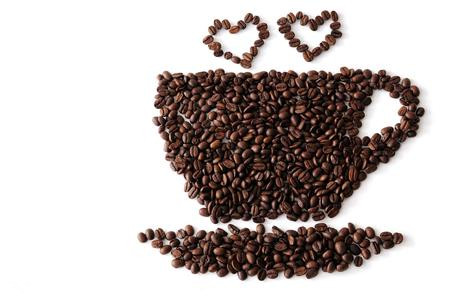There are two varieties of coffee: Arabica and Robusta.

At present, the main varieties of coffee grown in the world come from two original varieties: Arabica and Robusta. The planting methods, growth environment and other conditional characteristics of the two are different, and even the caffeine content is quite different.
Arabica
Robusta
Mostly found in tropical Central and South America
Of Madagascar in west-central and eastern Africa and Indonesia in Asia
Planted on an alpine slope at an altitude of 900 mi 2000 meters.
Planted on an alpine slope at an altitude of 200 Mel 600 meters above sea level
Need a high degree of manual intensive care
By contrast, it doesn't take much manpower.
The taste is rich.
The taste is poor and bitter.
Low caffeine content
The caffeine content is about twice that of Arabica.
The price is higher
The price is lower
The shape of the bean is small, the front is long oval, the middle crack is narrow and tortuous, and the arc on the back of the bean is smooth.
The bean shape is larger, the front is gradually round, and the back is round and straight, a bit like barley seed.
Since coffee fruits are not ripe on the same tree at the same time, high-quality coffee must be picked by hand. About 75 per cent of the world's coffee is Arabica, but only 10 per cent is coffee that can be used in high-end coffee shops. If coffee beans produced from one country or region have not been mixed with other coffee beans, we call them single-source coffee beans.
The types of Arabica coffee trees include: Bourbon,Typica,New modern nybrids caturra, Catimor and Variedad Colobiana.
Growing environment: coffee grows in a treeless climate with medium rainfall and plenty of sunshine. The main coffee growing regions in the world are the Americas, Africa, the Arab region and Indonesia. Coffee is grown in about 80 countries in these regions.
Coffee tree fruit will show a bright red after ripening, commonly known as "coffee cherry fruit (Coffee cherry)", after picking the fruit, you can go to the "cherry fruit" coffee beans, usually a fruit covered with two oval raw beans.
The opposite side of two raw beans in the fruit is called flatbean. The fruit of some coffee trees is covered with only one raw bean, which is called single-bract bean or round bean (peabery).
In botany, coffee trees belong to the evergreen trees of the subgenus Rubiaceae, and coffee beans, commonly known as coffee beans, are actually the seeds of the fruit of coffee trees. They are called coffee beans only because they are shaped like beans. Climate is the decisive factor in coffee cultivation. Coffee trees are only suitable for growing in the tropics or subtropics, between latitudes of 25 degrees south and north.
Important Notice :
前街咖啡 FrontStreet Coffee has moved to new addredd:
FrontStreet Coffee Address: 315,Donghua East Road,GuangZhou
Tel:020 38364473
- Prev

The simple use of the French press pot coffee basic knowledge
The coffee produced by the French press can well retain the different flavors of different coffee beans, and the single product made can make people drink the taste intuitively. The method of using the pressure pot is very simple, but what is not mastered is bitter water. Three variables of coffee press. One: powder thickness, two: water temperature, three: time 1, powder thickness method pressure requirements for grinding are not too high, but for
- Next

Properties of coffee beans during roasting Coffee roasting tips
The roasting process is the main process in heating green beans to develop coffee aroma and taste. The aroma and taste emitted are determined by the original characteristics of each raw bean. The depth of fried beans depends on the type of raw beans, market demand or cooking method. Which baking machine is used to control the depth of fried beans. Even though the chemical and physical components of the various raw beans themselves are different, these components
Related
- Beginners will see the "Coffee pull flower" guide!
- What is the difference between ice blog purified milk and ordinary milk coffee?
- Why is the Philippines the largest producer of crops in Liberia?
- For coffee extraction, should the fine powder be retained?
- How does extracted espresso fill pressed powder? How much strength does it take to press the powder?
- How to make jasmine cold extract coffee? Is the jasmine + latte good?
- Will this little toy really make the coffee taste better? How does Lily Drip affect coffee extraction?
- Will the action of slapping the filter cup also affect coffee extraction?
- What's the difference between powder-to-water ratio and powder-to-liquid ratio?
- What is the Ethiopian local species? What does it have to do with Heirloom native species?

